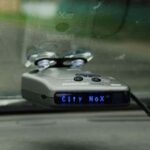If you are a fan of the crime drama you are going to love this, I have always been curious of the legitimacy and accuracy of the lie detector, mostly enticed by how to apply it, and the criminals who some how manage to beat the device, but that’s another story. After hours of scouring the net, I found how easy it is to make one of my own. So using some old discarded parts I had lying around from old computers, I pushed forward to build my very own
device.
In the movies, besides intimidation, the lie detector rules as an invaluable method to catch a suspect in a lie during questioning. Curious as to which one of my friends or even my dog is pilfering my beloved Barq’s root beer; I constructed my detector in accordance to a schematic I found on-line. Some parts you will need to make your homemade detector can be found at your local hardware or electronics store.
Before you head out for supplies, though, take a look around the home, you may already have a few the parts needed in your home. Some supplies you will need, a housing for the detector, I used the housing from an old power supply taking up space in the pile of old parts I couldn’t bring myself to throw out. Salvaging the housing from my electronics junk pile eliminates the need to drill holes for the speaker and saves a few bucks.
You will also need a 4.7k resistor, 82k resistor, 2n3904uF transistor, 2n3906uF transistor, one 2-AA battery holder, small circuit board, also salvaged from my junk pile, a PC speaker, velcro, aluminum foil, two pieces of wire, guess where I found those? A couple of AA batteries and one 0.01uF capacitor should complete the list of supplies. Building the circuit board was as easy, even more so if you can handle the likes of a handy soldering iron.
Once you solder your two resistors and capacitors, attach the battery holder and PC speaker you’ve completed the bulk of the assembly. If your housing does not have holes, you will have to either drill or punch them in yourself. These holes will allow you to hear the speaker once you are ready to use the device. Once the component are all in place, use hot glue to secure the pieces and close the housing and you are almost done.
Next we are going to make the finger pads, this is the part where the velcro and aluminum foil come into play. Cut your velcro into two three inch pieces and attach the aluminum foil to the adhesive side, remember to add your wire and another piece of velcro to secure it around your fingers. Repeat the last step for both contact wires and you are ready to use your homemade lie detector. Place the finger pads on your suspected teller of tall tales, and ask your questions.
The detector works on the understanding that when a person lies skin resistance lowers. Once you present your questions you will hear a discernible difference in the buzz coming from the speakers. If the pitch lowers then rest assured your suspect is attempting to deceive you, but to no avail. It may not be as high tech or cosmetically aesthetic, but you may find it effective and cost efficient. Have fun and good luck catching your man or beast.




